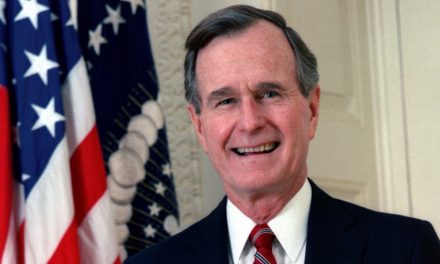The first congressional hearing on unidentified flying objects (UFOs) in fifty years kicked off this morning before the House Intelligence subcommittee in Washington, D.C. Not surprisingly, the cable news networks cut into regular programming to cover some of the testimony.
Though originally referred to as “flying saucers,” fascination and use of the term “UFO” dates back to the 1950s, and is attributed to Air Force Captain Edward Ruppelt, who led “Project Blue Book.” A code name for a study of UFOs, the campaign ran from 1952 to 1969.
Dramatic accounts of “Unidentified Aerial Phenomena” have fueled countless conspiracy theories, decades of entertainment productions and plenty of small businesses. Not to mention late night talk radio fodder. The idea of little green men on Mars and beyond has been good for men and their mammon on Earth.
When I was in high school, I had a history teacher named John Olson. Mr. Olson was a no-nonsense-type guy – the kind who didn’t suffer fools lightly. He would say that instead of investigating UFO sightings, we should investigate the people who report seeing them. He made good sense to me.
But what can we make of all of this, especially with the government recently releasing footage of sensational, though grainy images of objects flying at unexplained high rates of speed, some even seeming to defy known laws of physics?
First, belief in UFOs isn’t all equal. I can believe that unexplained phenomena exist and have been spotted – but that doesn’t mean their origins are out of this world. In fact, top-secret military aircraft are always in production and being tested. For example, Lockheed’s F-117 Nighthawk, known as the “stealth fighter,” was used in combat for seven years before the public was even made aware of its existence.
So, it’s entirely probable that many of the so-called UFO sightings are top-secret military aircraft, whether from the United States or from other countries. And to be clear, our government denying the reports doesn’t make the reports any less likely. After all, that’s how governments historically respond to classified projects and programs.
Some have even speculated that their denials and even release and declassification of mysterious video is a form of psychological warfare designed to intimidate our adversaries. In other words, we know that they know we have capabilities that will do damage – and everyone knowing that will hopefully deter proactive military action. It’s the idea that the threat of it all decreases the threat of it all.
Yet, one gets the sense there is more than just a thirst for information behind the public’s fascination and intrigue with the subject.
It seems that the rise in UFO interest and even cultural obsession can be correlated to the rise in secularism. That’s because if people no longer believe that God is the center of all things, they intuitively know something else has to fill that void.
Enter claims of extraterrestrial life or other science fiction themes that attempt to make sense of life or explain the purpose of our existence.
The Academy-award winning movie producer George Lucas, best known for the Star Wars franchise, calls himself a “Buddhist Methodist,” and once reflected:
“I see ‘Star Wars’ as taking all the issues that religion represents and trying to distill them down into a more modern and accessible construct. I wanted to make it so that young people would begin to ask questions about the mystery.”
Lucas isn’t just entertaining. He’s attempting to teach – and parents should be aware. But however confused and conflated the director’s personal religious beliefs may be, he’s also demonstrating that it’s impossible to believe in nothing. Even nothing eventually becomes something.
It was Pascal, the French mathematician and philosopher who famously wrote, “There is a God-shaped vacuum in the heart of each man which cannot be satisfied by any created thing but only by God the Creator, made known through Jesus Christ.”
The popularized phrase, “Take me to your leader,” is said to date back to a New Yorker cartoon from 1953. Nearly three-quarters of a century later, we still laugh when the trope is used or uttered in culture. In the end, for Christians, of course, our only true leader is Jesus Christ – and no one need take us to Him, because He is always available to us wherever we may be.
Photo from Shutterstock.






